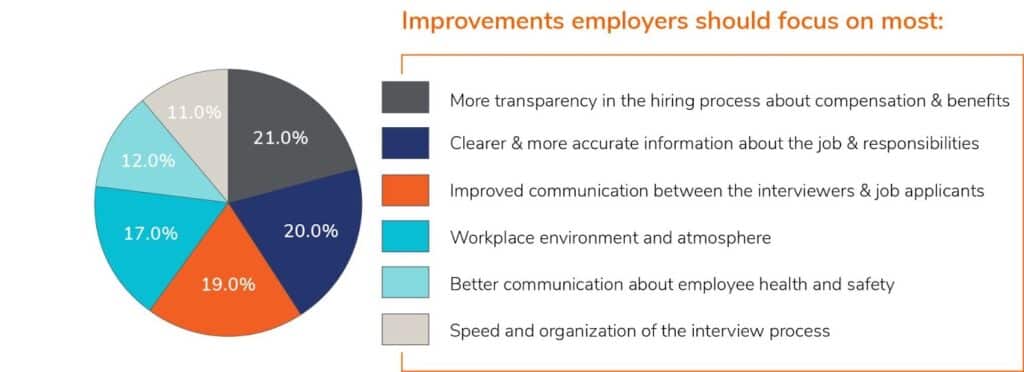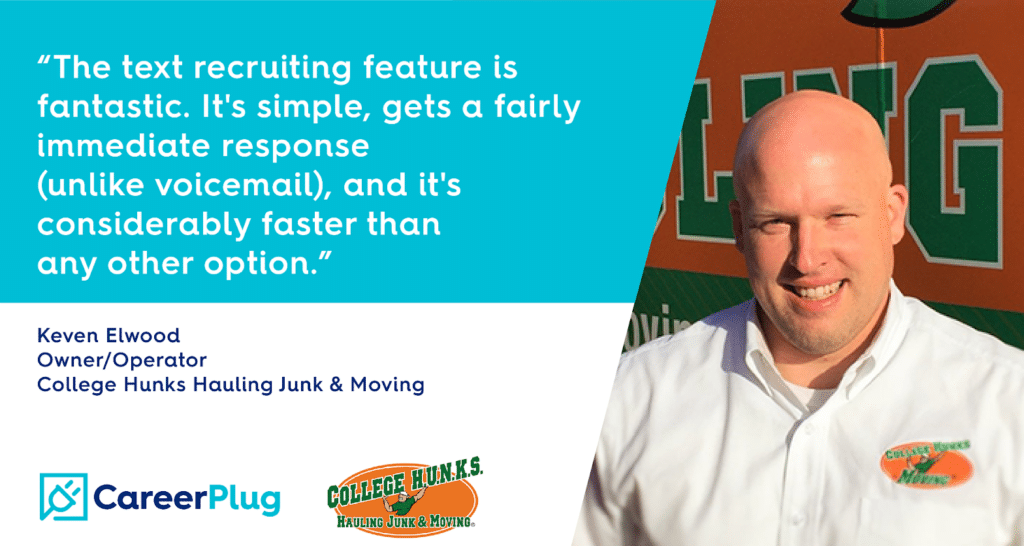If you’re like most business owners, hiring is just one of the many important items on your ever growing to-do list. And even though you might realize the importance of a great hiring process, it can be really easy to let some things slip through the cracks when you have so many other daily responsibilities fighting for your attention.
Unfortunately some of the easiest things to skip or forget in a hiring process can have a huge impact on your ability to make the right hires. At CareerPlug, we’re on a mission to make hiring easier, so we want to share some of the common steps employers are forgetting during hiring.
5 Things Employer Forget When Hiring:
1. Communicate with all applicants
Communication is key during a hiring process. Hopefully, you’re maintaining timely and efficient communication with the candidates you’re most interested in. But did you know that it’s just as important to communicate with the candidates you don’t want to move forward as well?
Polite rejection letters keep applicants from playing the waiting and wondering game. They are the extra step that helps you provide a great experience to everyone – not just the candidates you want to hire.
This has a positive impact on your employer brand which is your business’s reputation as perceived by job seekers. And since more than half of job seekers abandon their pursuit of a company after reading negative reviews, it’s clear that having a stellar reputation is crucial to continue attracting and hiring great applicants.
Using an applicant tracking system (ATS) like CareerPlug can make it easier to communicate with candidates using text recruiting and automated interview scheduling. We also have automations that will send a polite rejection to applicants that don’t check all your boxes so that you can spend more time focusing on your best candidates.
2. Background and reference checks
When you need to make a hire fast, it can be tempting to skip reference and background checks. After all, you’ve already reviewed their resume and gone through an extensive interview process – are these final steps truly necessary?
Reference and background checks are a crucial part of making good hiring decisions. Reference checks (when you speak to a candidate’s past employers) can help you learn a lot about your candidate – including how to set them up for success in their new role. And background checks (which involve using a third party to screen a candidate’s history) can help you verify that someone is who they say they are and ensure workplace safety.
Stay compliant by informing all candidates about your reference check and background screening policy and ask for the candidate’s consent during the first meeting. Put all necessary information and provisions on your website. Perform the same checks on every potential employee – don’t make any exceptions.
Pro tip: Make sure to avoid using any language like “background check” and “fingerprint check” in any job postings you put online. Many major job boards, like Indeed, will flag these terms to stay compliant with cities and states that have laws around criminal history based job discrimination.
3. Put the compensation in the job posting
You’ve taken the time to craft the perfect job description. But before you hit publish and share your posting with the world, there’s one thing to make sure you do:
Put the compensation in your job posting.
In some states, it’s now required by law to include compensation in job descriptions. And major job boards are also hoping to encourage this trend, like Indeed which recently started including an estimated range in the job listing if an employer doesn’t specify. If this estimate isn’t in line with what you’re willing to pay, it can lead to frustrated applicants and wasted time for your hiring process. And not including compensation at all could prevent quality candidates from applying to your jobs.
And if you need even more convincing, in our annual Candidate Experience Report, we found that 27% of job seekers expected to be informed about compensation in the initial job post. Plus, including the compensation (or compensation range) in your job posting can save you time as it allows job seekers to self-select in or out.
If you’re not sure where to start with competitive compensation, research what it looks like in your market by searching for similar job titles online. You can also check out free compensation resources on sites like Indeed or Glassdoor – and keep in mind these sites are also where job seekers go to evaluate their market worth.
4. Candidates are evaluating you too
Evaluating candidates and deciding if they are the right fit for the role is sort of the main goal of a hiring process, right? But one thing many employers forget to keep in mind is that candidates are evaluating them, too.
It can be helpful to think about your best applicants like you would a sales lead. Hopefully, you are reaching out to them quickly and nurturing a positive relationship with them. When the time comes to make your offer, you want them to say yes without hesitation!
Hiring top candidates is the same way – and you should hire like you sell.
49% of job seekers we surveyed said that they have turned down a job due to a negative candidate experience. This means that you could lose out on more than half of your potential hires if you forget that they are evaluating you throughout the process as well.
We asked job seekers to get specific about what they’d like to see during a hiring process. Here are their answers and some insight into how to create a great candidate experience:

For more on how to create a positive candidate experience so that you can hire like you sell, check out this video from our Senior Director of People, Natalie Morgan:
5. Move quickly
Candidates these days have a lot of options.
According to our data, it takes employers just over seven days on average to contact applicants after they apply. Could you imagine if you waited that long to follow up with a sales lead? Especially considering that, 84% of job seekers said that the employer’s responsiveness after initially applying influenced their decision to accept an offer.
Automating the tedious parts of your hiring process like interview scheduling and applicant screening can help you speed up the process and get candidates down your pipeline sooner. Text recruiting can also be the added edge that helps you reach candidates quicker than your competition. Clients who use our texting feature have a 32% faster time-to-hire rate.

In today’s competitive labor market, every second counts. It’s important to reach out to candidates sooner and stay on top of communication if you want to make the right hires.

Build a Great Hiring Process with CareerPlug
Don’t let important hiring steps slip through the cracks. Automate your hiring process with our easy-to-use applicant tracking system so you can make the right hires fast.
GET A FREE DEMO


























